Azaruja, Portugal – October 2013
There was a time when good wine came in a gallon jug with a screw cap. Perhaps we can all remember Carlo Rossi, “No wine is sold before its time”, or good old Red Mountain Burgundy. As our tastes and perhaps our budget improved, we graduated to better wines that were preserved with these little things called corks. I had always wondered what exactly the story was about corks. I only knew that the majority of them came from Portugal, so here we were in the town of Azaruja in the Alentejo region of southern Portugal, one of many centers of cork harvesting.
Learning about Cork
As we drove into town, the main drag was lined with cork processing plants. It was evening so we pulled into in the center of town and camped next to the bullring. It was a quiet friendly village atmosphere. Our cork education would begin in the morning.
The Cortiçarte-Arte em Cortiça, Lda. Company was one of the largest processing plants and even had a store selling cork products. This was amazing. We had no idea of the number of things that can be made with cork. Decorative items, lamps, purses, shoes, hot pads, clothing, even items like aprons and umbrellas. Who would ever guess? Some of the material felt like silk!
The open forests of cork trees in the Alentejo region and further south leave no sign of being depleted. Each tree gets an initial cutting where the bark is peeled off, sometime between June and August. A new layer of cork bark grows and no damage is done to the tree. The tree is marked and will remain for nine years before the cork bark can be harvested again.
Processing Cork
At the processing plant the cork is washed in hot water to kill bacteria and other microbes. It is then sorted for use. Selections of cork are shipped to other plants in northern Portugal near Porto. There is little waste. Cork unusable for decorative items or wine & other stoppers is ground and pressed into cork-based material used for floors and building products.
Yes, many wineries are starting to use synthetic material and even, (shudder), screw caps, but you can rest assured, the next time you open that bottle of Old Vine Zinfandel and smell the real cork, there is more where that came from, despite the rumors from respected wineries who may have found synthetic corks cheaper to use.
- Our camp next to the bullring in Azaruja was quiet and friendly.
- The lonely cork. Where does it come from and are we depleting the supply?
- harvested cork rind
- This is just part of one year’s harvest in one of many processing plants in the Alentejo region of southern Portugal. Looks like there is enough for a few more wine bottles.
- Premium cork, like the stack in the back seen here, is sent to special cork stopper processing factories in northern Portugal.
- A craftsman at the Cortiçarte-Arte em Cortiça, Lda. Company hones out the center of a first-growth cork tree for use as a decorative planter or perhaps a cute lamp.
- Umbrellas and aprons are just a few of many amazing things that can be made from cork.
- Monika is sporting a cork apron.
- The new cork is first washed in hot water for an hour to clean it and kill bacteria and other microbes.
- The washed slabs of cork are cooled and dried in huge bundles.
- There are many grades of cork. Each is sorted based on thickness and grain.
- The first-growth cork harvested (being held), is very rough on the outside. Second and subsequent harvests (on the left) are much smoother.
- This is an acorn. It grows trees that make cork. Pigs eat acorns and they make ham, at least on the Iberian Peninsula. We’ll tell you more about that soon.
- Once the cork is harvested or peeled from the tree; it will rest for 9 years before it can be harvested again.
- Cork was harvested on the lower part of the trunk.



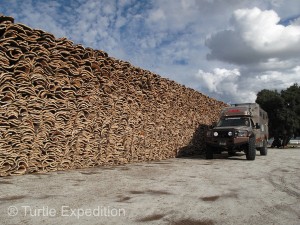

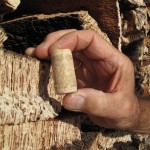
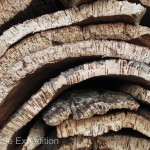
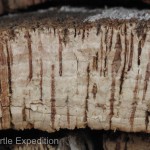
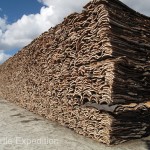
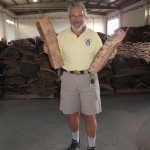
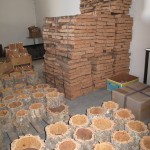
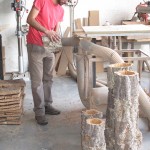
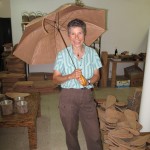
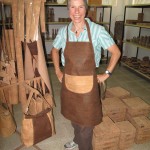
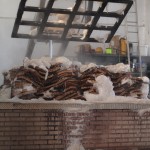
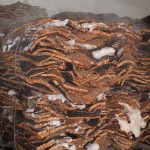
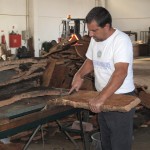
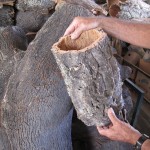
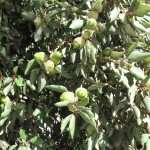

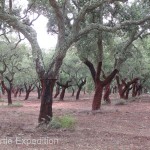
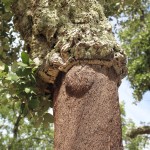








Leave a Comment